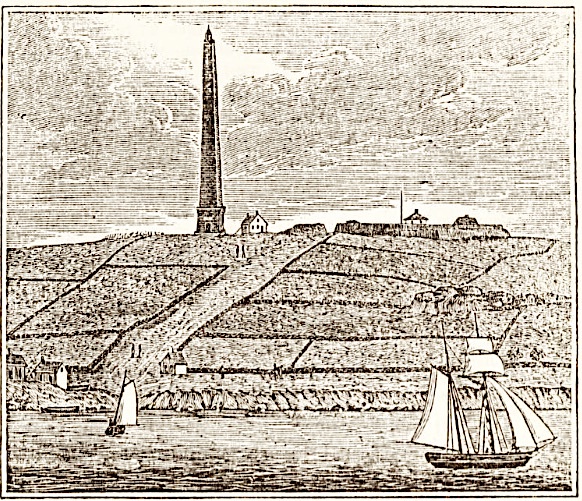Historic engraving of Groton, CT from Jonathan Warner Barber’s Connecticut Historic Collections (1836) showing the shoreline, a rock outcrop, complete deforestation, and rectangular pattern of stone walls. Because he worked to capture the scene as with a photograph, such images provide a minimum age for stone walls that remain today. In other words, those shown predate 1836. Those not shown postdate 1836.
On June 9, 2025, I released Version 1.1 of my new Manual for the Inventory and Description of Stone Walls. Based on comments received, I hereby update this to Version 1.2 dated June 14, 2025. The earlier version emerged from a 3-part program I was offering during the spring of 2025 to town planners, land trusts, historical societies, and garden clubs, a: (1) Roundtable Discussion with key players to discuss how to proceed in this case; (2) Training Walk to demonstrate how to classify and describe walls and features; and (3) Public Lecture explaining why stone walls matter. The results were so encouraging that I decided to share a working draft of them in writing that summarized what I had been sharing in presentations.
MANUAL FOR INVENTORY
- Download the PDF Version of the Manual for Stone Wall Inventory Version 1.2.
- Download the MSWord Version of the Manual for Stone Wall Inventory Version 1.2.
EXCEL SPREADSHEETS
The manual is accompanied by three Excel Spreadsheets that you can tweak for your purposes and use as options.
- The published NOMENCLATURE used to describe walls and related features. This lists and briefly defines all terms in a compact form. Consider it a short glossary of terms.
- The published classification system or TAXONOMY used to determine what kind of wall you’re investigating. This is briefly explained in the CLASSIFICATION section of the Manual for Inventory and Description using color-coded boldface text. The taxa are also included on the inventory forms listed below, and explained in the original scholarly source document cited below.
- The INVENTORY FORMS I’ve developed to standardize and speed up wall classification and description (In lower left, select Sheet 1 for Walls, and Sheet 2 for related Features). Every entry point is explained in the Manual for Inventory.
BACKGROUND PUBLISHED SCHOLARLY ARTICLES
The manual includes a long list of published sources, many available online. Below are links to PDF versions of the two key articles from the peer-reviewed scholarly literature.
- Conserving the Historic Stone Walls in New England. Though published in The Public Historian, this article includes recommendations for ecology, management, and education. February, 2005.
- Taxonomy and Nomenclature for the Stone Domain in New England. This explains the need for a science of stone walls. Though published in the journal Historical Archaeology, it is relevant to all outdoor science fields (ecology, geology, hydrology, mapping, etc. September, 2023.
EXAMPLE MEDIA COVERAGE OF THREE-PART STONE WALL WORKSHOP
- One man’s quiet war to save New England’s oldest landmarks. PDF of Providence Journal article on July 1, 2025 by Jack Perry about the July 2 Stone Wall Day in Little Compton, RI.
As it says in the manual, please feel free to send me comments and corrections. Good luck!
